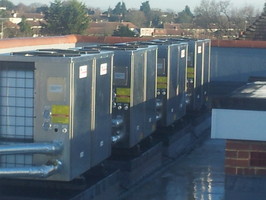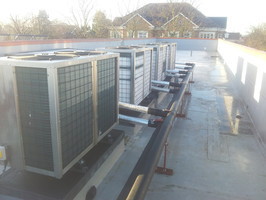Air Source Heat
What is Air source heat?
An air source heat pump (ASHP) is usually placed outside at the side or back of a property, and takes heat from the air and boosts it to a higher temperature using a heat pump. This heat is then used to heat radiators, underfloor heating systems or even warm air convectors and hot water in your home.
The pump needs electricity to run, but the idea is that it uses less electrical energy than the heat it produces.
Ground source heat pumps are also available. They draw heat from the ground via a network of water pipes buried underground, usually in your garden. See our separate page for Ground Source heat for more details.
How it works?
ASHPs look similar to air-conditioning units and are less disruptive to install than ground source heat pumps, as they do not require any digging in your garden.
If you would like to know more about Air source heat, please do get in touch.
An ASHP works a bit like a refrigerator in reverse. The process consists of an evaporator, a compressor and a condenser. It absorbs heat from the outside air and the heat pump compressor then increases the temperature of that heat further to create useful heat.
There are two main types of Air Source Heat;
- Air-to-water systems take heat from the outside air and feed it into your wet central heating system. As the heat produced is cooler than that from a conventional boiler, you may need to install larger radiators or underfloor heating in your home to make the most of it.
- Air-to-air systems take heat from the outside air and feed it into your home through fans. This type of system cannot produce hot water.
Please get in touch if you would like to know more about Air Source Heat.




